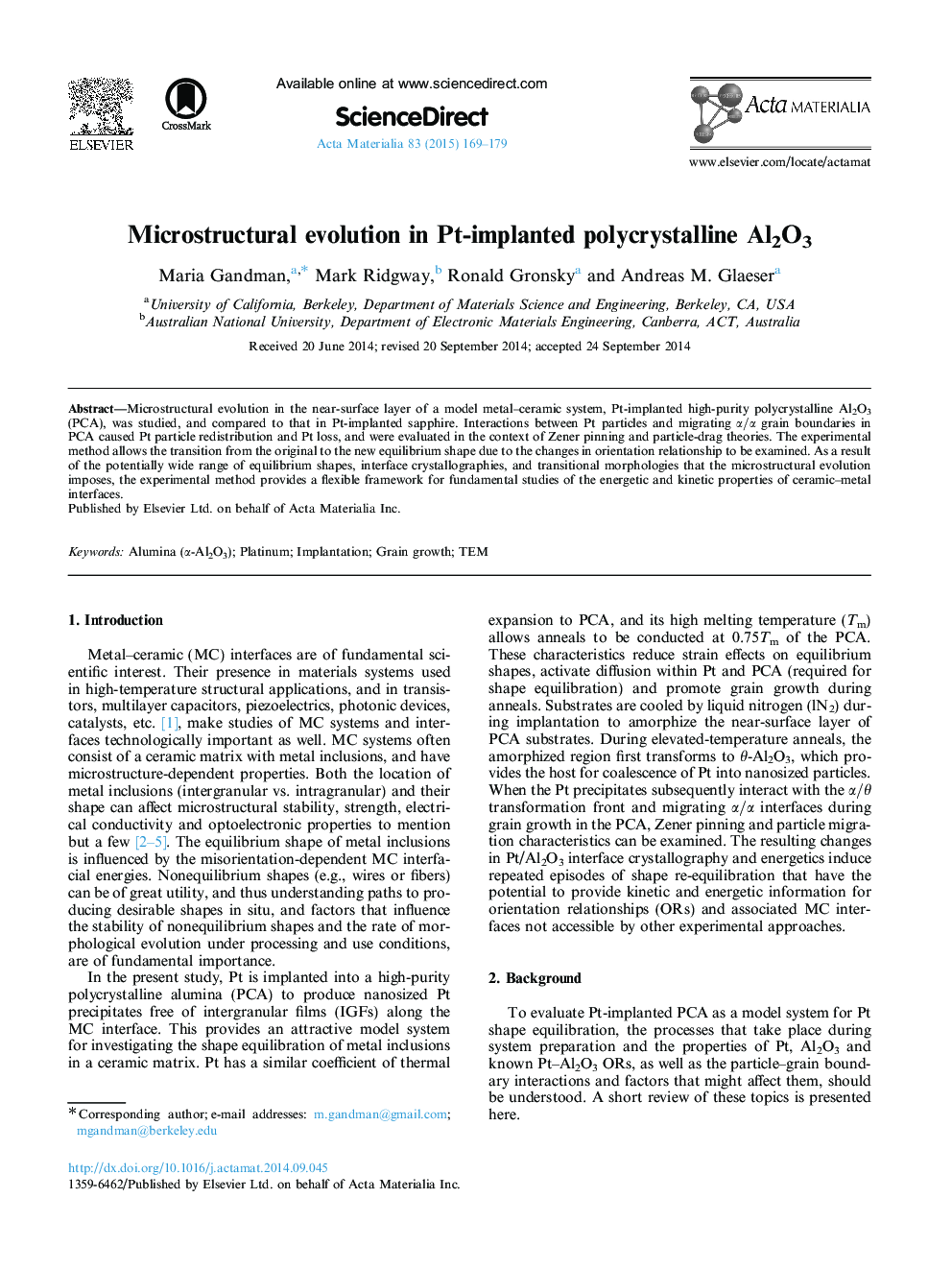| Article ID | Journal | Published Year | Pages | File Type |
|---|---|---|---|---|
| 7880907 | Acta Materialia | 2015 | 11 Pages |
Abstract
Microstructural evolution in the near-surface layer of a model metal-ceramic system, Pt-implanted high-purity polycrystalline Al2O3 (PCA), was studied, and compared to that in Pt-implanted sapphire. Interactions between Pt particles and migrating α/α grain boundaries in PCA caused Pt particle redistribution and Pt loss, and were evaluated in the context of Zener pinning and particle-drag theories. The experimental method allows the transition from the original to the new equilibrium shape due to the changes in orientation relationship to be examined. As a result of the potentially wide range of equilibrium shapes, interface crystallographies, and transitional morphologies that the microstructural evolution imposes, the experimental method provides a flexible framework for fundamental studies of the energetic and kinetic properties of ceramic-metal interfaces.
Related Topics
Physical Sciences and Engineering
Materials Science
Ceramics and Composites
Authors
Maria Gandman, Mark Ridgway, Ronald Gronsky, Andreas M. Glaeser,
